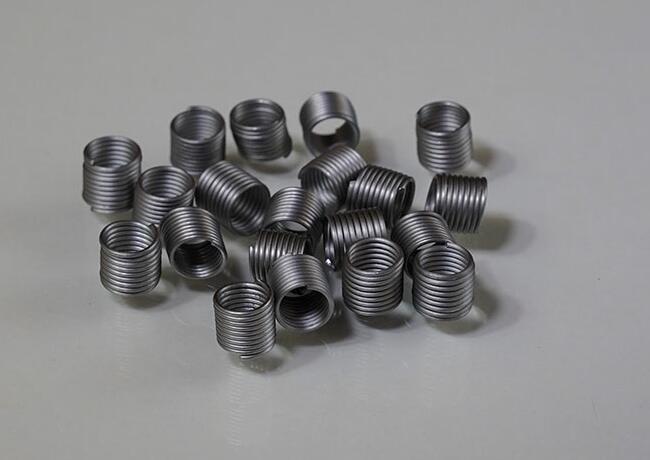Introduction to the Sources and Uses of Memory Alloy Materials
[ 信息發(fā)布:本站 | 發(fā)布時間:2019-09-12 | 瀏覽:3102 ]
The progress of mankind has been made in the course of constant exploration, and when our industry was still underdeveloped, it was very scarce in the choice of industrial raw materials, and we had to choose only those materials which we could produce and which we could use. There is no way to choose which type of material you want to use, but with the continuous progress of scientific exploration, people's progress and breakthroughs in raw materials have also increased. A material called memory alloy has attracted people's attention. And we're going to learn about this memory alloy.
In the 1870s, an alloy with the function of "memory" shape appeared in world materials science. Memory alloy is a very special metal bar. It is easily bent. We put it into a glass cylinder filled with hot water and the metal strip goes forward. Put it in cold water, and the metal strip is restored to its original state. In a glass cylinder filled with cold water, a spring is elongated and the spring is automatically closed when it is put into hot water. The spring in the cold water restores its original state, and in hot water, it contracts. The spring can be stretched and contracted indefinitely, contracting and pulling. These are made of a smart metal with memory, and its microscopic structure has two relatively stable States. At high temperatures, the alloy can be transformed into any shape you want. At low temperatures, the alloy can be stretched. But if it is reheated, it will remember its original shape and change back. This material is called memory metal. It is mainly nickel-titanium alloy material. For example, a spiral high temperature alloy, after high temperature annealing, its shape is in a spiral state. At room temperature, it used a lot of force to straighten it, but as long as the nickel-titanium memory Hejinsi heated it to a certain "abnormal temperature," the alloy seemed to remember something and immediately returned to it. Its original spiral form.
Alloy spring:

The spring is made of TiNi memory Hejinsi and utilizes the one-way memory effect of the shape memory alloy. After elongation, the temperature can automatically restore the original length of the temperature drive element as the temperature increases. This spring is also a typical structural form of a shape memory alloy element for industrial use. After elongation, hot water or hot wind is used as the heat source, and the temperature of the original length is 65 °C -85 °C and the original length is 80mm. The martensite phase of the shape memory alloy(ie, the phase structure at low temperature, the low temperature referred to here refers to room temperature) is the soft phase, and the mother phase(ie, the phase structure at high temperature, the high temperature referred to here refers to 65 °C -85 °C) is the hard phase.
Purpose:
Memory alloys are widely used. For example, mechanical fastening pins, pipe joints, fire alarms, inserts, brazing of integrated circuits on electronic equipment equipment, medical artificial heart valves, spinal correction sticks, skull repair, oral teeth and jaw repair surgery and so on. It will also play a magical role in communications satellites, color television sets, temperature controllers, and toys. It will also become a new material memory alloy on various fronts such as modern navigation, aviation, aerospace, transportation, and textile. It has been used in pipe binding and automatic control. Casing made of memory alloy can replace welding. The method is to fully expand the tube end by about 4 % at low temperatures, and when it is assembled, it is put together. Once heated, the sleeve shrinks to restore the original shape and forms a tight joint. The United States Navy aircraft's hydraulic system uses 100,000 such connections and has not experienced oil spills or damage for many years. Ship and undersea oil field pipeline damage, with memory alloy accessories repaired, very convenient. In some inconvenient parts of construction, pins are made of memory alloys and heated in holes. The tail ends are automatically curled separately to form single-sided fittings.
The medical application of memory alloys is also very noticeable. For example, bone plates used for grafting can not only fix two broken bones, but also generate compression force in the process of restoring the original shape, forcing the broken bones to join together. Orthodontic filaments used in dentistry, long clips for ligation of brain aneurysms and vasectomy, and branch plates for spinal straightening are all initiated by the effect of body temperature after implantation in the human body. The thrombus filter is also a new memory alloy product. After the strained filter is implanted into the vein, it gradually returns to a network, preventing 95 % of the clotting block from flowing to the heart and lungs.
In the above, we introduce some relevant knowledge about memory alloys. We first introduce the material composition of memory alloys. We all know that memory alloys can bend and deform in hot water. In cold water, it will become straight, which is caused by the different materials of memory alloys. Next we introduce the springs made by memory alloys. This spring combines the characteristics of memory alloys. Finally, we introduce the use of memory alloys, you can learn more about memory alloys from this article.